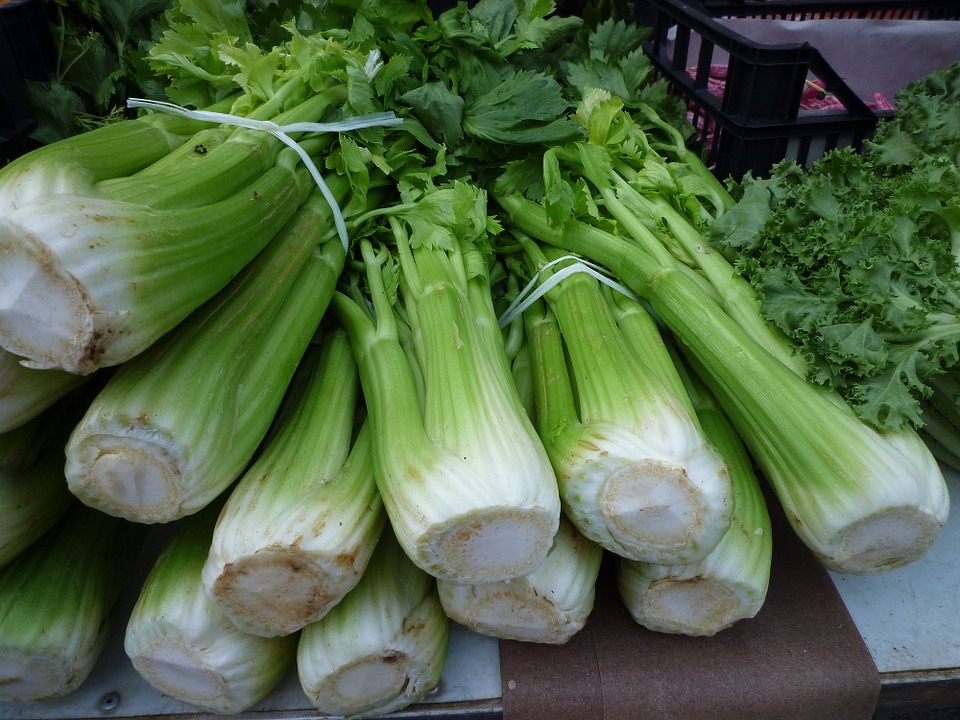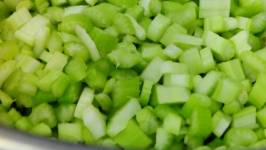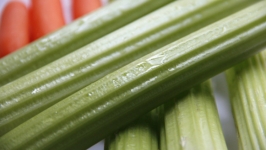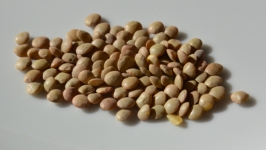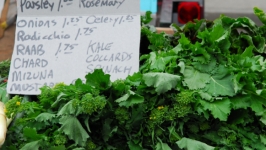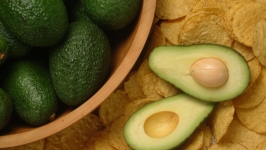Celery Recipes & Info
Discover | Celery can be difficult to grow. Requiring very particular conditions, celery only thrives in a moist, highly nutrient-dense environment with a long, cool growing season. The little used mucklands in the Kalamazoo area during the late 19 th century provided just the place. Thought unsuitable for farming, these swamplands became an ideal setting for what became Michigan’s most successful crop. Celery cultivation was so successful that Kalamazoo was deemed “celery city” and was the most popular food of street vendors. Even though Michigan is now more diversified in crop growth, the state ranks number two for celery production in the nation.
Taste | Celery stalks are juicy and crisp with a slightly sweet and herbaceous flavor. The feathery leaves, often removed and discarded, are tender and flavorful and are an added benefit to a recipe. Three forms of celery exist: stalk celery, wild plant or Chinese celery and celeriac or celery root. Green Pascal and golden are the two main varieties of stalk celery with thick, solid stems and the most flavor. Celery is most commonly eaten raw as a low-calorie snack, either stuffed or with a dip. It is a key aromatic ingredient in stocks, soups, stews, sauces and stuffing.
Fortify | Celery has a surprising amount of potassium, vitamin C and folate that protects the body from aging and illness. A mere two stalks of celery provides 20 calories, 2 grams of fiber, no fat and an abundance of antioxidant compounds that provide a strong defense against disease. Urban legend states eating celery results in “negative calories,” meaning celery provides less energy then we expend consuming it. This has some truth to it. Celery’s cellular composition allows us to only metabolize a small amount so it provides fewer calories than is needed to digest. Sadly, the calories you lose are very minimal, only 10 to 12 per day.
Preserve | Purchase only straight celery stalks with rigid ribs that snap crisply when bent and have bright green leaf tops. Expect fresh celery to last up to two weeks in a loosely sealed plastic bag in the refrigerator. Once ready to use, separate the stalks to wash thoroughly, peeling off any strings and cutting off root ends. If you find that your celery is starting to wilt, place in ice water in the refrigerator for a few hours to re-crisp. Freeze excess chopped celery by blanching in boiling water for three minutes then immediately place in ice-cold water. Drain well and place in desired portions in freezer-safe containers. Frozen celery should be directly added to dishes while cooking.


